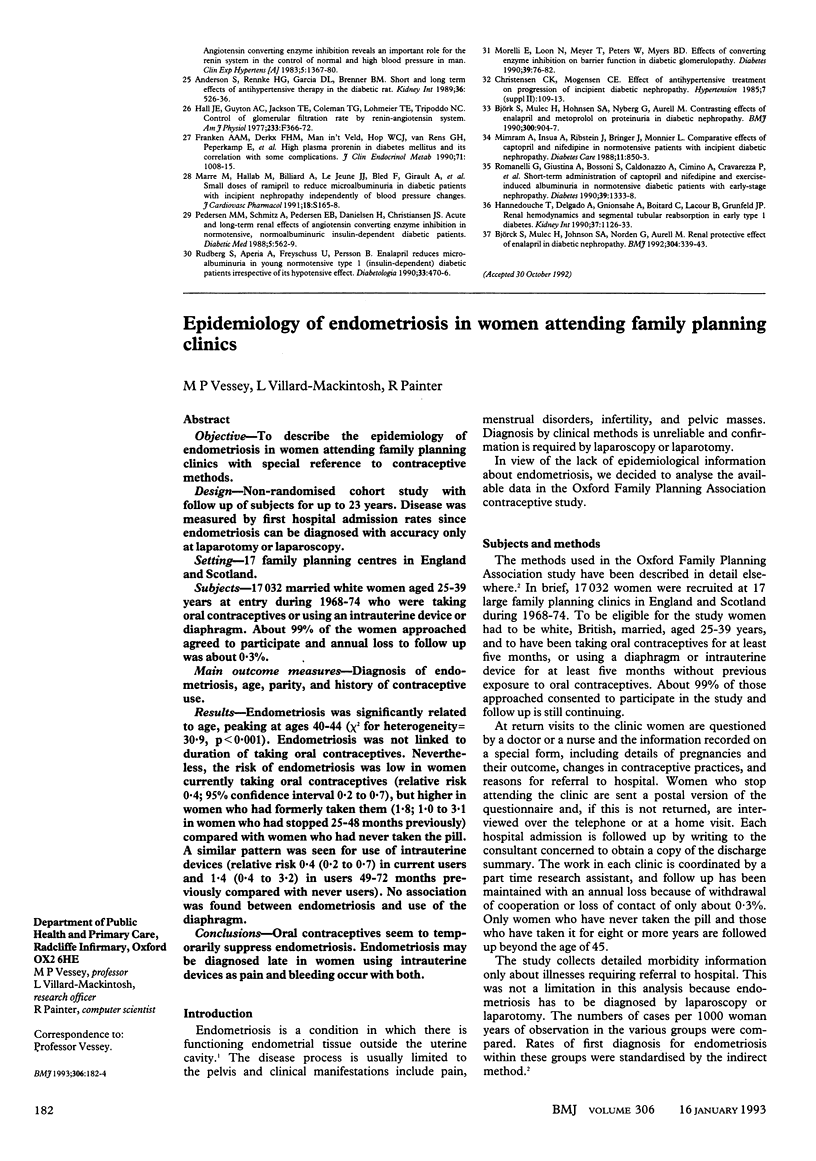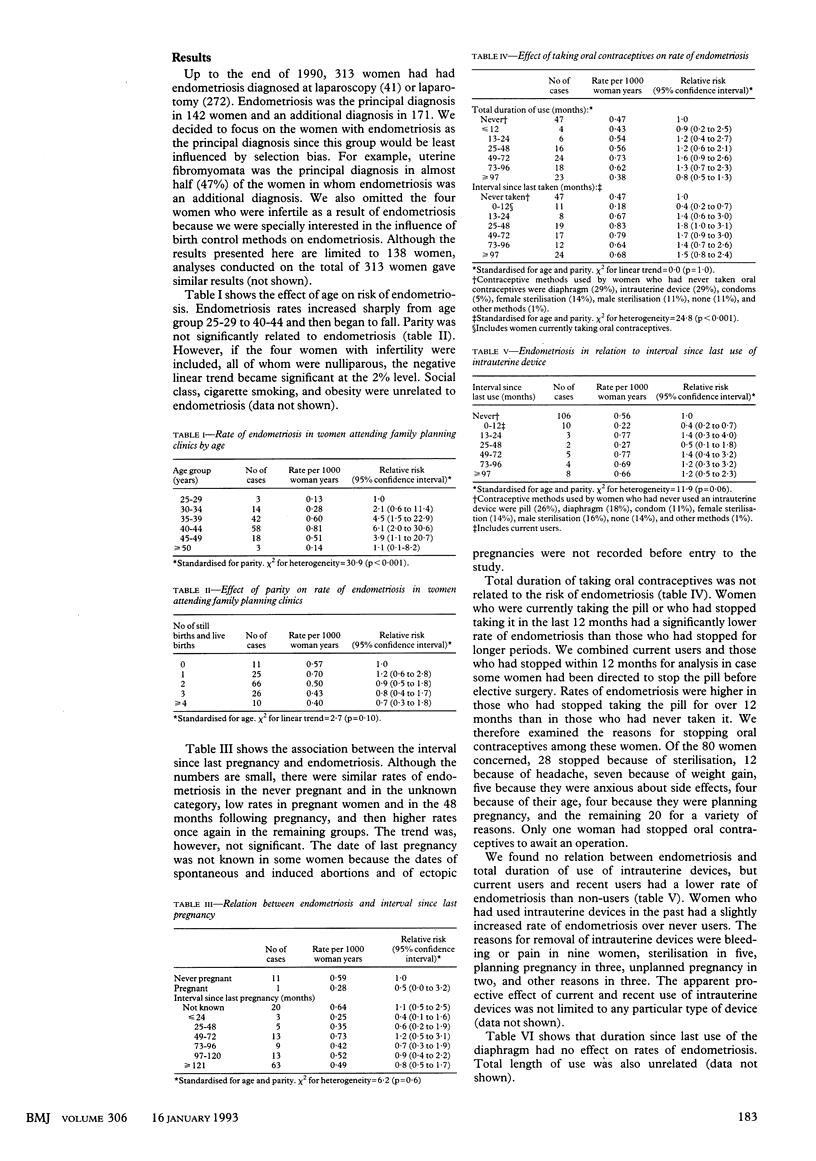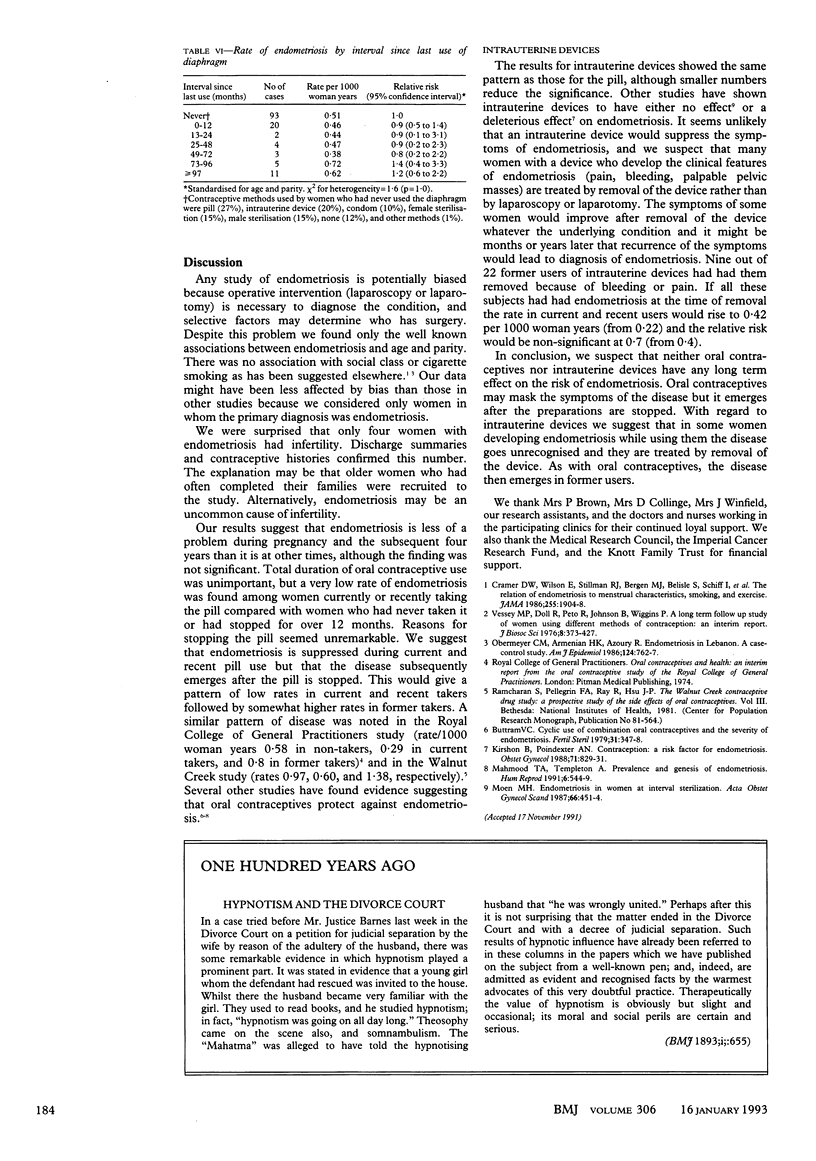Abstract
OBJECTIVE--To describe the epidemiology of endometriosis in women attending family planning clinics with special reference to contraceptive methods. DESIGN--Non-randomised cohort study with follow up of subjects for up to 23 years. Disease was measured by first hospital admission rates since endometriosis can be diagnosed with accuracy only at laparotomy or laparoscopy. SETTING--17 family planning centres in England and Scotland. SUBJECTS--17,032 married white women aged 25-39 years at entry during 1968-74 who were taking oral contraceptives or using an intrauterine device or diaphragm. About 99% of the women approached agreed to participate and annual loss to follow up was about 0.3%. MAIN OUTCOME MEASURES--Diagnosis of endometriosis, age, parity, and history of contraceptive use. RESULTS--Endometriosis was significantly related to age, peaking at ages 40-44 (chi 2 for heterogeneity = 30.9, p < 0.001). Endometriosis was not linked to duration of taking oral contraceptives. Nevertheless, the risk of endometriosis was low in women currently taking oral contraceptives (relative risk 0.4; 95% confidence interval 0.2 to 0.7), but higher in women who had formerly taken them (1.8; 1.0 to 3.1 in women who had stopped 25-48 months previously) compared with women who had never taken the pill. A similar pattern was seen for use of intrauterine devices (relative risk 0.4 (0.2 to 0.7) in current users and 1.4 (0.4 to 3.2) in users 49-72 months previously compared with never users). No association was found between endometriosis and use of the diaphragm. CONCLUSIONS--Oral contraceptives seem to temporarily suppress endometriosis. Endometriosis may be diagnosed late in women using intrauterine devices as pain and bleeding occur with both.
Full text
PDF


Selected References
These references are in PubMed. This may not be the complete list of references from this article.
- Buttram V. C., Jr Cyclic use of combination oral contraceptives and the severity of endometriosis. Fertil Steril. 1979 Mar;31(3):347–348. doi: 10.1016/s0015-0282(16)43887-2. [DOI] [PubMed] [Google Scholar]
- Cramer D. W., Wilson E., Stillman R. J., Berger M. J., Belisle S., Schiff I., Albrecht B., Gibson M., Stadel B. V., Schoenbaum S. C. The relation of endometriosis to menstrual characteristics, smoking, and exercise. JAMA. 1986 Apr 11;255(14):1904–1908. [PubMed] [Google Scholar]
- Kirshon B., Poindexter A. N., 3rd Contraception: a risk factor for endometriosis. Obstet Gynecol. 1988 Jun;71(6 Pt 1):829–831. [PubMed] [Google Scholar]
- Mahmood T. A., Templeton A. Prevalence and genesis of endometriosis. Hum Reprod. 1991 Apr;6(4):544–549. doi: 10.1093/oxfordjournals.humrep.a137377. [DOI] [PubMed] [Google Scholar]
- Makhlouf Obermeyer C., Armenian H. K., Azoury R. Endometriosis in Lebanon. A case-control study. Am J Epidemiol. 1986 Nov;124(5):762–767. doi: 10.1093/oxfordjournals.aje.a114452. [DOI] [PubMed] [Google Scholar]
- Moen M. H. Endometriosis in women at interval sterilization. Acta Obstet Gynecol Scand. 1987;66(5):451–454. doi: 10.3109/00016348709022053. [DOI] [PubMed] [Google Scholar]
- Vessey M., Doll R., Peto R., Johnson B., Wiggins P. A long-term follow-up study of women using different methods of contraception--an interim report. J Biosoc Sci. 1976 Oct;8(4):373–427. doi: 10.1017/s0021932000010890. [DOI] [PubMed] [Google Scholar]


